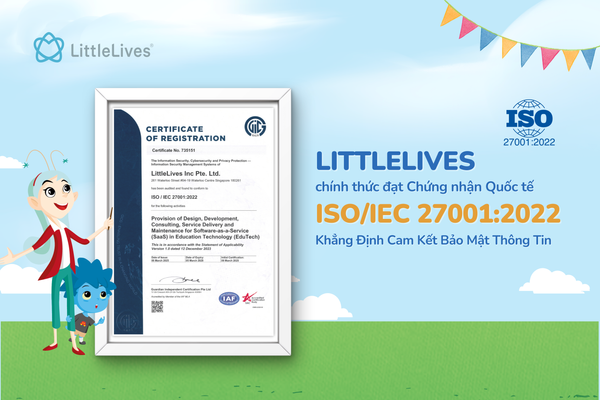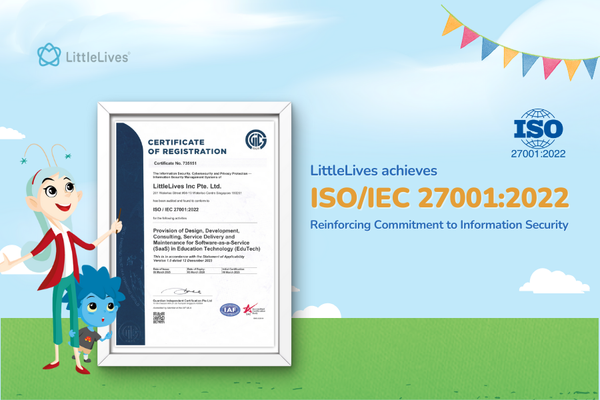Management system: does your school require it?

A school management system is an effective way of running a school. It holistically manages students' learning and plans and improves the organization's operations and improves performance. More organizations today, including schools, are implementing this program. The top reasons to implement an ERP are increasing efficiency (35%) followed by cost advantage (29%). However, these reasons do not always have solutions in the form of process automation. First, you need to decide on the question, "Does your school need a school learning management system?"
You will find out which processes need automation in order to maximize the school management system. In addition to the five signs that you need a modern school management system, you will also learn about important aspects and methods that relate directly to the implementation of the utility in the training structure. We will share the most common errors that affect poor performance after installing this software. The information you receive will certainly help predict the future installation of a learning management system while minimizing possible harm to your school's ecosystem.
How do you know when it's time to implement a school management system?

Most schools start with a few simple, stand-alone tools to manage various processes, such as QuickBooks or Excel spreadsheets. However, like everything in this world, educational institutions continue to develop.
Here are five signs you need a modern school management system:
- You spend more time on day-to-day operations. The school management system integrates solutions and data into a single system with a common interface, making it easier for business units to communicate and efficiently complete their tasks.
- You have a lot of school questions unanswered. Can you easily answer important questions about the organization, such as monthly revenue or non-attendance rates? If not, your progress may be held back by silo systems and lack of access to metrics. The school's resource planning software is designed to address these challenges.
- You lose track of your workflows. Are there areas where your processes are eluding you? You may find it harder to manage inventory, meet student needs, or control costs. In this case, it may be necessary to restructure work processes to accommodate growth or changes in priorities.
- You do more things manually than via automation. Do most of your teachers use their own applications and processes to complete their tasks? If so, then most likely, you are wasting too much time on duplicate data entry. When information cannot move between systems, reporting takes longer, errors occur more often, and decision-making is more difficult.
- You are missing out on rapidly changing opportunities. Are you spending so much time managing your organization that you are unable to take advantage of promising new opportunities? More modern ERP programs include advanced intelligence, such as machine learning and predictive analytics, that make it easier to identify and leverage profitable new ventures.
ERP implementation stages

The challenge in implementing school management software is due to the need for a comprehensive preliminary study of the work of an educational institution. This will allow you to understand whether ERP automation is advisable in this organization, or if certain processes should be adjusted first. We recommend you do not skip this step. Otherwise, you risk losing time and resources through an extended or unsuccessful implementation of the system.
If you find that the school has all the processes sufficiently debugged and everything is ready for implementation, you can start drawing up a project plan. At this stage, we recommend that the management draw up a detailed list of requirements for the ERP system, determine which areas of work should be covered, which departments to automate, etc.
A typical implementation of a learning management system implies the automation of a school using a specially developed technology, which usually includes:
- Preparation for implementation. As we wrote above, before buying a system, you should define the pros and cons and understand whether the organization really needs automation. This will allow you to determine the goals and expectations for the implementation, as well as estimate the budget for the automation project.
- Analysis and planning. At this stage, the work of departments and production processes are studied. Then tasks are defined, goals are set, after which a technical project plan is formed.
- Installation and testing. The next step is to install the program, transfer data from the used accounting systems to a new one, reconcile data, test the system and eliminate possible errors.
- Staff training. This is a prerequisite for the correct use of the ERP system in the organization. Usually, a familiarization course on working with the product is conducted for teachers and managers, and it is possible to create instructions for future reference.
- Commissioning. Experts set up accounting and configuration parameters for the system to work correctly, and if necessary, carry out improvements in the reports. At the final stage, you can find and fix problems that arise when working with the school learning management system.
Implementation methods of school learning management system
There are three key strategies for implementing a management system for a school:
- Step-by-step integration. In this case, ERP automation is carried out on several main modules, and then, after debugging them, the software is implemented in all areas of the educational institution. With this option, the risk of failure is relatively low. But it is worth mentioning that this method takes quite a long time, so it will be difficult for you to assess the effect of implementing the system right away.
- Integrated ERP implementation. Installation of the program immediately and completely in all areas of the educational industry. This is a rather risky option and is recommended for schools with a simple organizational structure. This strategy requires thorough testing of all processes since before the implementation of the school learning management system, it is necessary to check in detail how correctly all educational processes work.
- Combined method. The system is being implemented in all directions at once but in stages. This method allows you to speed up the commissioning of the program with the least loss of quality of work. The risk of errors, in this case, is often negligible.
Typical mistakes in school management system implementation

To improve the efficiency of an enterprise, installing an ERP is virtually the most expensive and most challenging task. But the final cost of implementation and the time required for this will depend on the number of errors arising in the process. Read on to identify common errors to avoid.
- A superficial analysis of management software vendors. As a rule, the main criterion for ERP is low cost. But sometimes, developers deliberately underestimate the cost of services to test the first customer's implementation process. In fact, such an installation may reveal serious flaws and failures in the system.
- Lack of understanding of the needs of the organization. Vendors may then over-sell you on unnecessary components in the ERP system, or, on the contrary, the installed functionalities will not be enough.
- Lack of priorities. This may lead to a delay in the installation process, unforeseen problems, etc.
- Insufficient training of personnel. The organization's staff may refuse to work in the system altogether or not maximize its capabilities.
- Underestimation of the accuracy of primary information. Since the key point in the work of the school management system is the analysis of information, the result of its work will largely depend on the correctness of the initial data. It would be best if you avoided typing errors and carefully checked the information provided.
- Lack of a plan for maintenance and implementation of updates. It is necessary to regularly increase production capacity, since the volume of processed information will also grow. The software component may require adjustments in the event of, for example, changes in legislation.
TLDR; we hope that our article can help you understand how best to maximize the benefits of a school management software. Do not forget to take into account the most common errors associated with the installation of this software. And most importantly, choose a reliable school management system supplier, such as LittleLives. After all, guaranteeing the successful use of ERP depends on further cooperation with a trusted company.
FAQs
- What is the purpose of the school management system?
A school management system is a set of useful tools, the purpose of which is to ensure the smooth management of an educational institution.
- What are school management tools?
The most popular tools of school management software are:
- Block storage of data,
- School bus tracking,
- Attendance tracking,
- Data analytics,
- Designing subsequent waste,
- Send payment notifications and much more.
- What is the best school management software?
There is a lot of school management software offers on the market today. One of the most relevant today is LittleLives. Advanced updates, unlimited consultation, and warranty support make this software one of the best.





